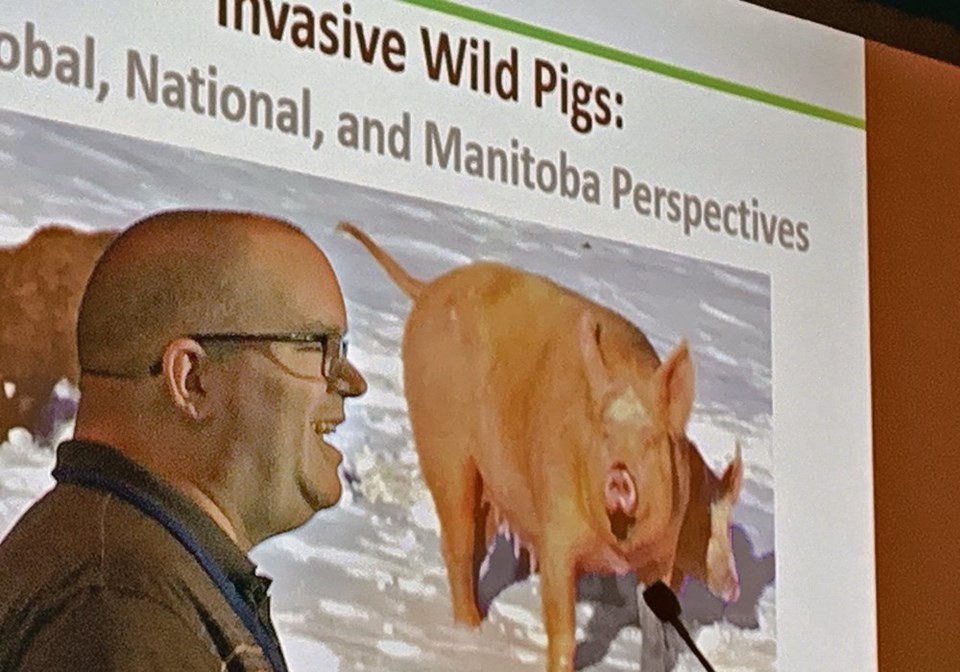WESTERN PRODUCER — Manitoba’s stronghold of wild pigs in Spruce Woods is expanding into an empire, warns Canada’s most prominent wild pig expert.
“Animals are spreading from there in every direction,” said Ryan Brook, a University of Saskatchewan professor who has followed the spread of wild pigs across Canada for years.
The spread of wild pigs is a risk to hog and crop producers not just in Manitoba, but also to American farmers who live near a corridor along which wild pigs could spread. It leads from the Spruce Woods hills and forests down to the Turtle Mountains and across the border.
Controlling the problem will demand an effort that goes beyond Manitoba’s borders.
“Saskatchewan is that white elephant in the room that there’s no way you can ignore,” said Brook, who spoke to the Manitoba Pork Council’s annual meeting April 6. Saskatchewan contains the greatest number of wild pigs in Canada.
Thousands of wild pigs are now roaming the Canadian Prairies. They are a hybrid mix of domestic pig DNA and wild boar genetics, the product of pigs and wild boars that have escaped or been released from farms in recent decades.
The animals are a grave concern for the hog industry because they can become a reservoir for various diseases, such as African swine fever, and if they become well established, they are hard to eradicate.
The animals are tough and resourceful, easily able to survive western Canadian winters and thrive on the crops farmers produce. Tearing into grain bags is a delight for wild pig herds, which are known as sounders.
Wild pig hot spots on the Prairies include the region north and west of Edmonton, in the Battlefords area, the northeastern grain belt of Saskatchewan and Spruce Woods, east of Brandon.
The animals face no significant threat from native predators. The pigs generally weigh more than wolves and move in sounders to defend themselves.
“The males are intact. All the animals have razor sharp tusks. They are insanely aggressive,” said Brook.
“To be clear: this is the worst invasive large mammal on the planet.”
Shooting wild pigs doesn’t work if all the animals in a sounder aren’t killed, Brook said. Shooting a few just causes the others to find deep cover, in which they can be almost impossible to find, and to scatter, spreading to new areas.
Single animal traps have the same problems. However, giant traps that catch whole sounders are promising.
Pig-specific poisons can work if provided in a way that protects other wildlife.
Brook and his pig-seeking colleagues have used “Judas pigs” to find concealed sounders, which has proven to be an effective method of finding wild populations.
The current problem on the Prairies was seeded by the crash of the wild boar industry in the early 2000s, which saw some animals escape captivity and others intentionally released by producers who were quitting the business. They met and bred with other fugitive pigs, producing today’s wildly variegated population.
Brook doesn’t think it’s too late for Manitoba or the rest of Western Canada to control its problem, even if there isn’t much time.
“We’re in the fourth quarter and the bad guys have the ball,” said Brook.
“Right now, we’re doing about one percent of what needs to be done. We have a long way to go.”




